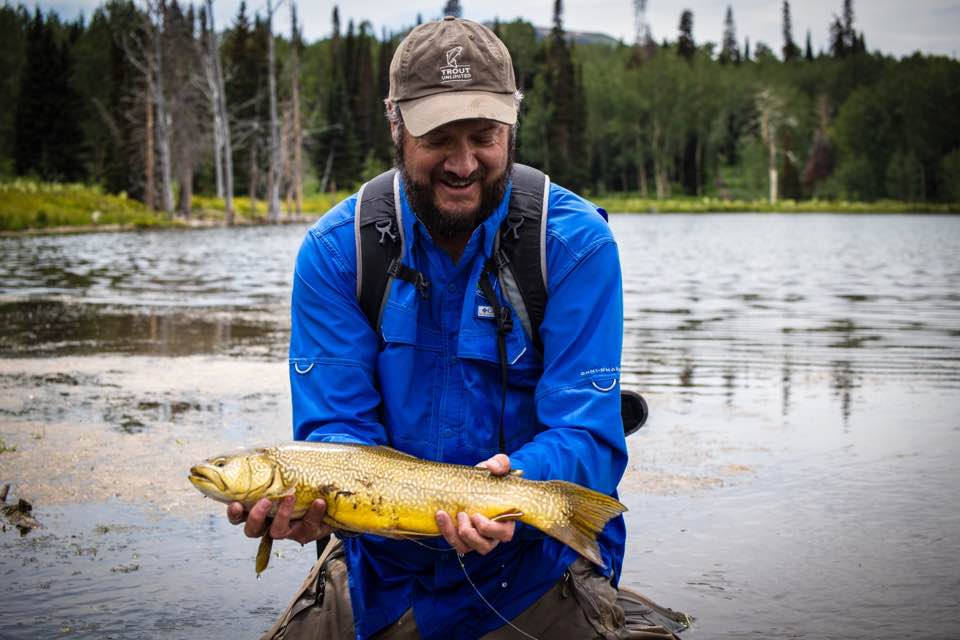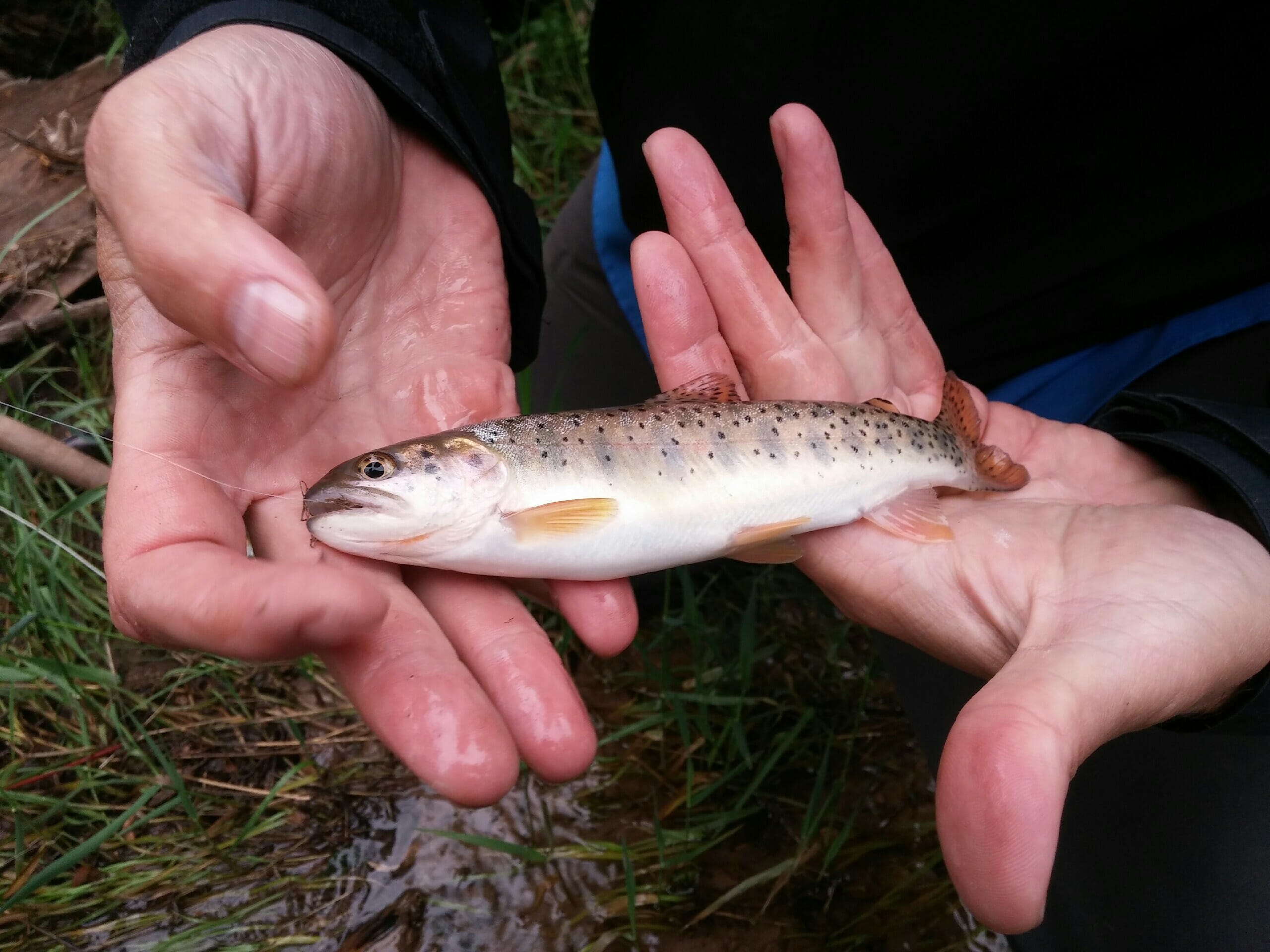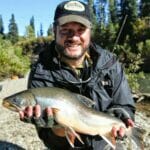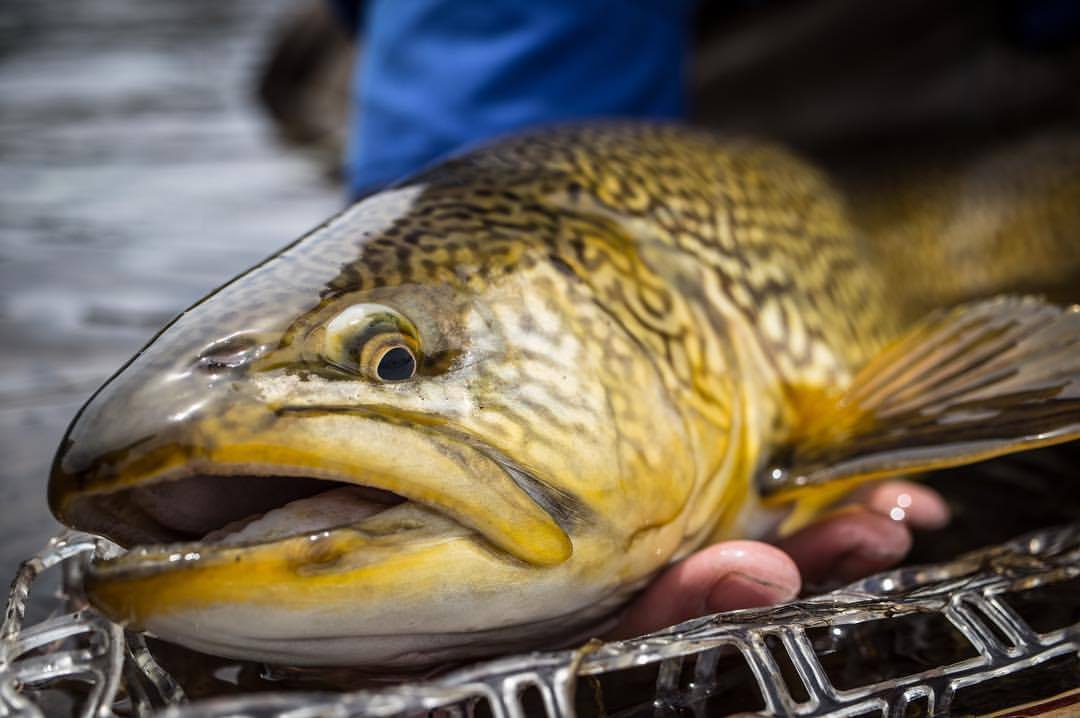The head of a tiger trout. Paul Burnett/Trout Unlimited.
By Brett Prettyman
This is the tale of two fish.
The take was similar. The tug was not.
One easily provided more thrill than the other, but it was not the fish you would expect.
I recently had the chance to visit the family ranch of a good friend in the high mountain country of Utah. The mountains were exploding in a variety of wildflowers, mule deer provided an audience as we fished and the trout were hitting; at least some of them.
We had come to see if we could hook up with some of the legendary tiger trout found in the lakes. Tigers, a sterile hybrid between a brown and brook trout, grow large quickly because they focus energy usually reserved for spawning on eating. They are feisty trout with an aggressive attitude, probably picked up from the brook trout side of the family.
We started landing trout within a few minutes of arriving, but none were larger than 14 or so inches. I walked around the lake casting wherever I could reach deeper water hoping that is where the larger fish would be found. I also ended up filling my waders while trying to reach those deeper spots.
After a handful of tigers I found myself near a small inlet. Our host had mentioned there was a channel of deeper water where it came in and focused my efforts there. Fish were jumping all over the lake, but they were not sipping. We hypothesized they were taking damselflies under the surface.
I was fishing a local bugger pattern known as the Crystal Killer. It had been working, so, when I saw a significant swirl within casting distance, I flung in that direction. It didn’t take long.

The author with his tiger trout. Paul Burnett/Trout Unlimited.
The line tightened and I did a strip set expecting to move the fish. It didn’t happen. I knew I was into a large tiger.
I let out the mandatory “whoop” to make sure my fellow anglers knew I had hooked up and then spent the next four or five minutes playing the fish – mostly to give them time to make it over and see my catch. It is never a bad thing to be able to say “that net isn’t big enough”.
After some pictures, a video release and some high fives. I had a moment to reflect on the awesome fish I had just landed. What a thrill.

A Bonnevile cutthroat trout caught in its historic range helped the author complete his Utah Cutthroat Slam. Paul Burnett/Trout Unlimited.
There easily could have been a 20-inch difference between the tiger trout and the Bonneville cutthroat I landed that day, but the sense of satisfaction in landing that little guy was overwhelming.
As someone who had helped design the Utah Cutthroat Slam and encouraged the Division of Wildlife Resources to do such a program for 20 years, it was tremendously satisfying to look at that cutthroat and know what it represented.
I only hope the more than 950 people who have registered for the Utah Cutthroat Slam get a similar feeling of accomplishment.
Brett Prettyman is the Intermountain Region Communications Director for Trout Unlimited. He is based out of Salt Lake City, Utah. He can be reached at bprettyman@tu.org



